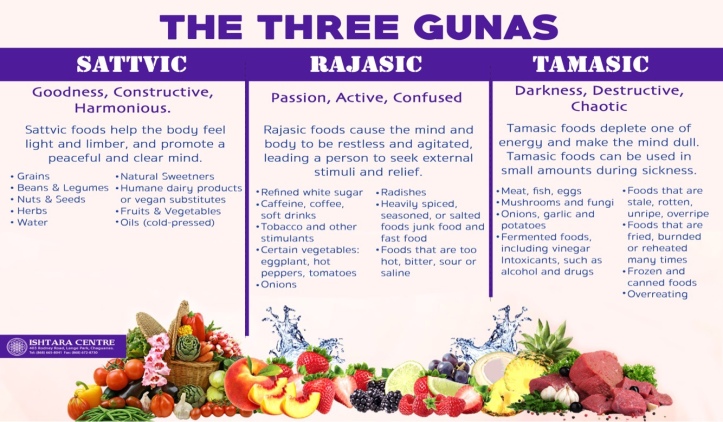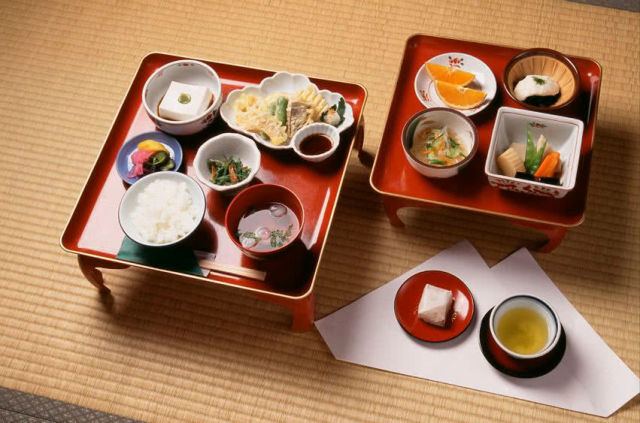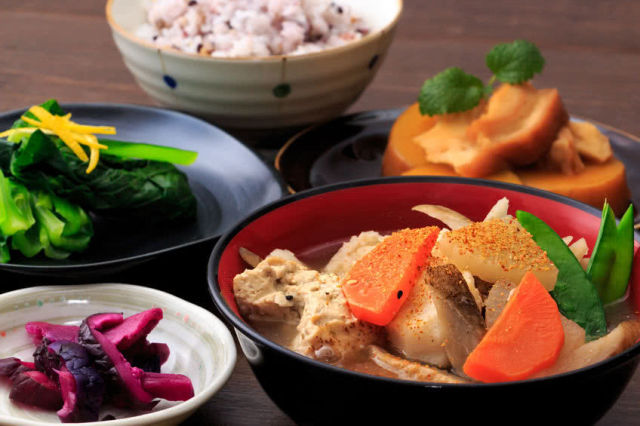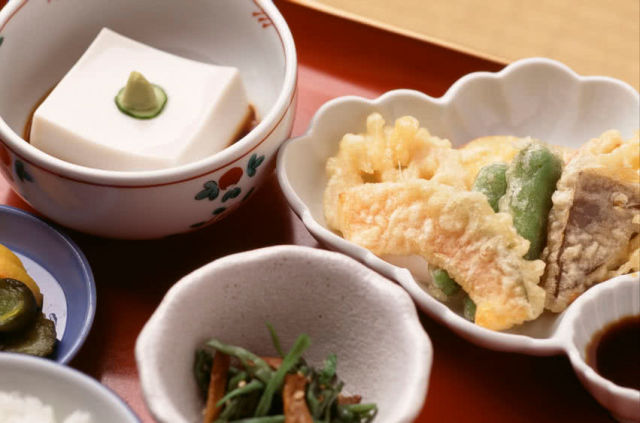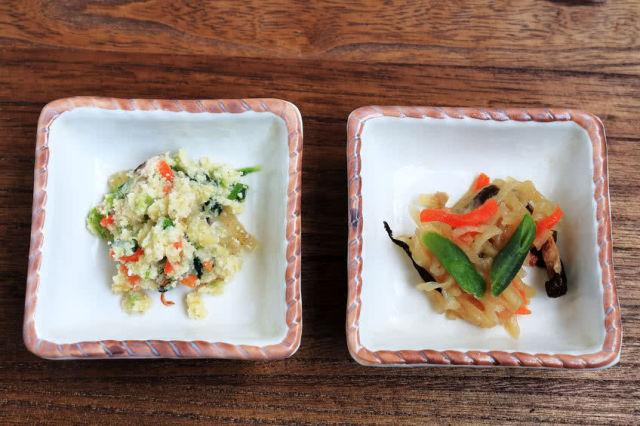Yogic Diet – Sattvic Foods
Sattva – It means one that is pure, natural, vital, energetic, clean, conscious, strong, true, honest and wise.
Ideally a yogic diet would be rich in sattvic foods. Sattvic foods are generally fresh vegetables, grains, and legumes, mild spices and mildly sweet foods. According to Ayurveda, Saatvik foods are important to maintain the balance of a healthy mind and body.
Some things to keep in mind when preparing Saatvik food –
- It is always freshly cooked and simple.
- Food should be combined to get nutrients from a variety of sources.
- It encourages foods that are grown harmoniously with nature (seasonal foods), and foods that are ripened and grown naturally.
- It forbids consumption of packaged, canned and processed food in any form.
- Just the enough amount of food is prepared so that there is no food wastage.
- The food should be chewed properly, eaten at a moderate pace and not rushed.
- Food is prepared with love and gratitude before consumption.
Today, I want to share a healthy and delicious Sattvic meal inspired by Shojin Ryori, which is the traditional vegetarian cuisine eaten by Buddhist monks in Japan. As the cuisine is made without meat, fish or other animal products, it can be enjoyed by vegans, vegetarians and meat-eaters alike.
Shojin Ryori – Sattvic Yet Sumptuous Vegetarian Japanese Food
A typical shojin ryori meal is centered around soybean-based foods like tofu along with seasonal vegetables and wild mountain plants, which are believed to bring balance and alignment to the body, mind, and spirit. This simple meal contributed to Japan’s elegant haute cuisine called kaiseki, and today can be eaten at the dining halls located in Buddhist temples across Japan.
Shojin ryori was introduced to Japan from China by the monk Dogen, the founder of Zen Buddhism, whose practice emphasizes seated meditation. Buddhist tradition forbade killing animals for human consumption, which was believed to cloud the spirit and interfere with meditation. As a result, the meals they ate were made without meat or fish and also abstained from the use of pungent flavors like garlic and onion. These principles became the foundation of shojin ryori. Shojin ryori is meticulously prepared so as to minimize waste, with even the carrot and radish peels and leafy green vegetable tops being used to make simple soup broth to accompany the meal.
Rule of Five
Despite the lack of meat, fish, or strong flavors, Japanese buddhist cuisine is far from bland. The monks use the “rule of five” when cooking, so that every meal offers five colors (green, yellow, red, black, and white) as well as five flavors (sweet, sour, salty, bitter, and umami), which are drawn out naturally from the ingredients rather than added via additional flavorings. This balance in color and flavor is believed to provide nutritional balance while also bringing the body into balance with the seasons. For example, in the summertime, cucumber and tomato provide refreshment to cool the body, while in the autumn and winter, root vegetables warm the body.
Shojin Ryori Ingredients
The main ingredients used in shojin ryori are popular vegetarian Japanese foods like tofu and other soy-related products—abura-age (fried soybean curd), koya-dofu (dried tofu), and natto (fermented soybeans). Fu, a traditional wheat gluten food, is also frequently used, along with konnyaku, a thick gelatin-like food made from the konjac plant.
These ingredients are joined by various vegetables that change with the seasons—tomatoes and eggplant in the summer, kabocha squash and sweet potatoes in the fall, and daikon radish and root vegetables in the winter. In the springtime, tender wild mountain greens such as fuki (butterbur) stalks and buds and the flowering nanohana (rapeseed) plant provide a gently astringent flavor.
The main types of seasonings used for shojin ryori are dashi stock made with kombu kelp, as well as soy sauce, sake, mirin (sweet rice wine), miso (fermented bean paste), vinegar, and sesame oil. However, the seasonings are used sparingly and are only meant to draw out the true flavors of the vegetables, rather than mask them. Eggs and milk were not traditionally used in Japanese cuisine because historically they were scarce in Japan.
Typical Shojin Ryori Dishes
A shojin ryori meal is usually structured around the principle of “ichi ju san sai”, or “one soup, three sides” plus rice and pickles. The soup can be anything from a creamy carrot or pumpkin soup made with soy milk, to kenchinjiru, a type of clear soup made with root vegetables, vegan dashi, and tofu. The sides are typically small dishes like goma-dofu (sesame tofu) garnished with freshly grated ginger or wasabi and a bit of soy sauce.
Other vegetarian Japanese food that appears commonly in shojin ryori dish is vegetable tempura, made with seasonal vegetables. The vegetables are marinated in miso-flavored water prior to being battered and fried so that each piece is flavorful enough to be eaten without dipping sauce. When eggplant is in season, nasu dengaku is also popular, a dish of deep-fried eggplant topped with a rich miso glaze.
A shojin ryori meal may also contain traditional Japanese salads like shiro-ae, a salad of mashed tofu and vegetables flavored with soy sauce and sesame, and namasu, a raw-food salad made with julienned vegetables like daikon radish and carrot seasoned with vinegar.
As Shojin Ryori focuses on simple cooking methods with raw, unprocessed fresh ingredients, you can also try your hand at preparing Shojin Ryori at home, with your local seasonal produce. Give it a shot, you may be surprised by how delicious and simple it can be! (:
